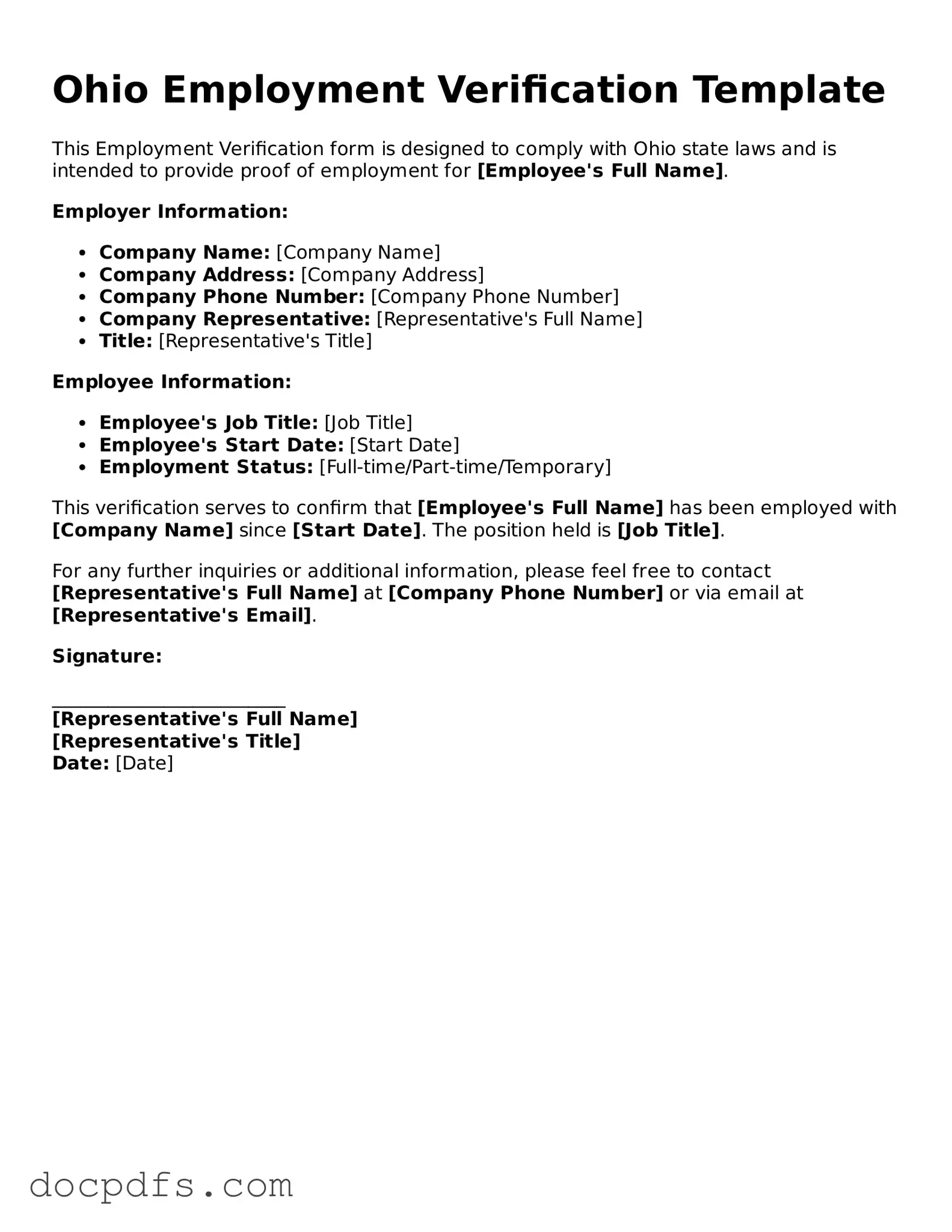Free Ohio Employment Verification Form
The Ohio Employment Verification form is a crucial document used to confirm an individual's employment status and history within the state. This form serves as a vital tool for employers and employees alike, facilitating accurate communication regarding employment details. Understanding its purpose and proper usage can significantly impact various employment-related processes.
Open Employment Verification Editor Now
